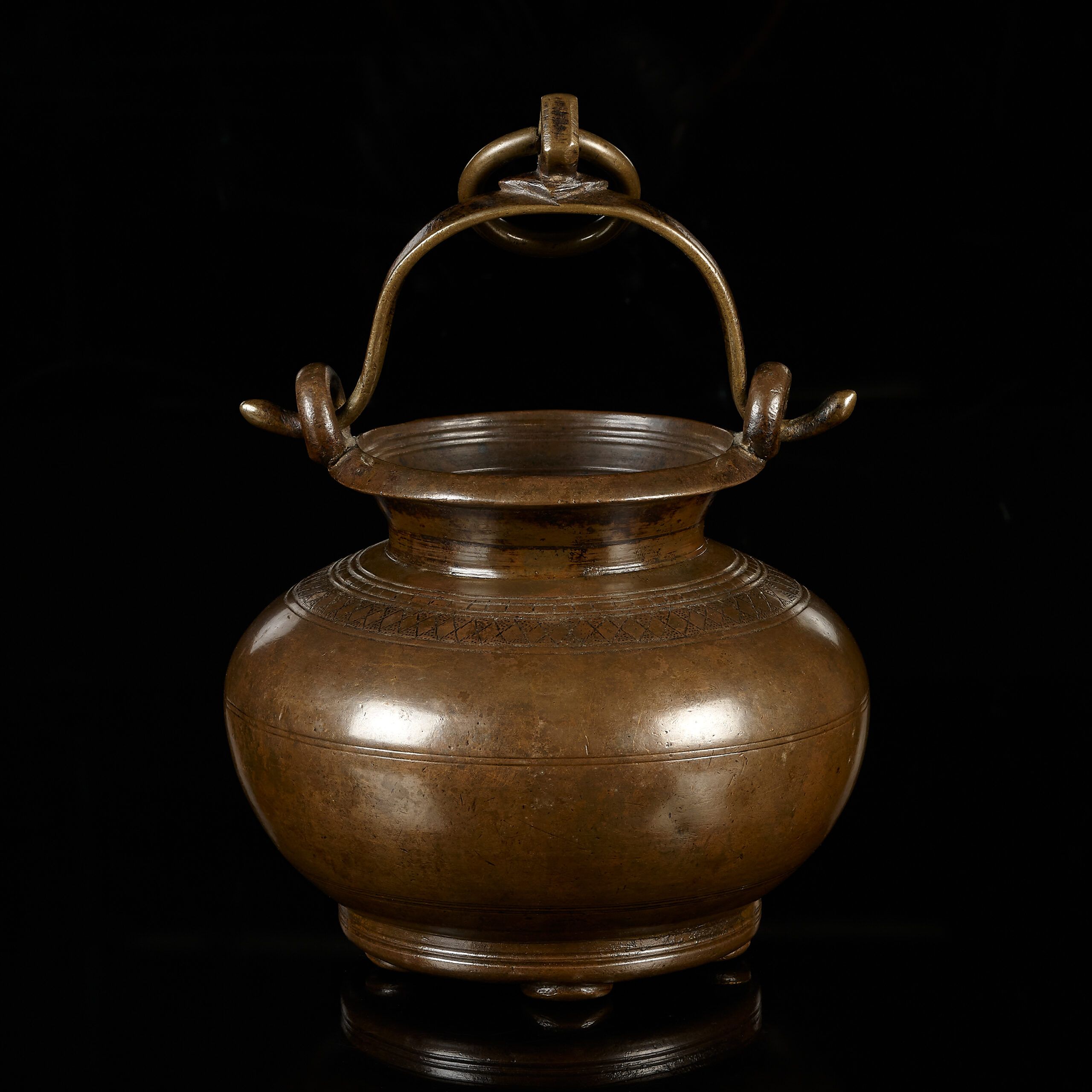Renaissance | First half of the 16th Century | Ca. 1520-/30
H. 28 cm. including handle D. 18 cm.
PROVENANCE
With Jan Roelofs Antiquairs | Maastricht | The Netherlands
Private collection | Belgium
CATALOGUE NOTE
This bronze vessel with a single hoop handle held the purifying Holy Water for use during baptisms and other Christian church services. These liturgical reservoirs are known as aspersorium, a noun derived from Latin ‘aspergere’, meaning ’to sprinkle’. It would have been accompanied by an aspergil(lum) or sprinkler. In art history this type of vessel is know as situla (plural situlae), from the Latin word for bucket or pail, used for a variety of elaborate bucket-shaped vessels from the Bronze Age to the Middle Ages, usually with a handle at the top. Evolved from wooden examples, the Church was the first to use buckets of bronze, which were grander than wood. Initially there were many basic similarities between the two. Bronze buckets copied the tapering profile of wooden buckets and were decorated with horizontal lines encircling the rim, centre and base. Gradually metalworkers began to evolve forms particular to bronze. They cast buckets with a circular stepped foot which they could decorate with a pattern of perforations. They sometimes incorporated inscriptions around the side of the vessel on the more elaborate examples. Handles were often a single hoop, as here, but some examples had a double hooped handle in cast bronze. Apart from use in churches private homes were often equipped with wall-mounted fonts for holy water, which were suspended from a metal hook on the wall.
This sober yet elegant aspersorium was made in Venice and features the distinctive shape and geometric decoration associated with the city. These were influenced by objects brought to the city by Venetian merchants trading with the Turkish and Arab empires that bordered the Mediterranean. Interestingly, the artisans of Venice also produced glass versions that mimic the same distinctive shape. Where Venetian brasswork often had extensive decoration, sometimes covering the entire surface of an object, the present piece is rather sober. The circular stepped foot stands on five disk-shaped cast-on feet. Its baluster-shaped body ends in a conic rim adorned with two cast-on bronze rings which support the single hoop handle. This handle still displays clear gothic shapes, indicating an origin in the first half of the 16th century. Comparable pieces can be found in the collection of the Victoria & Albert Museum, London, (e.g. inv. nrs. M.3-1946 and 494-1883).

